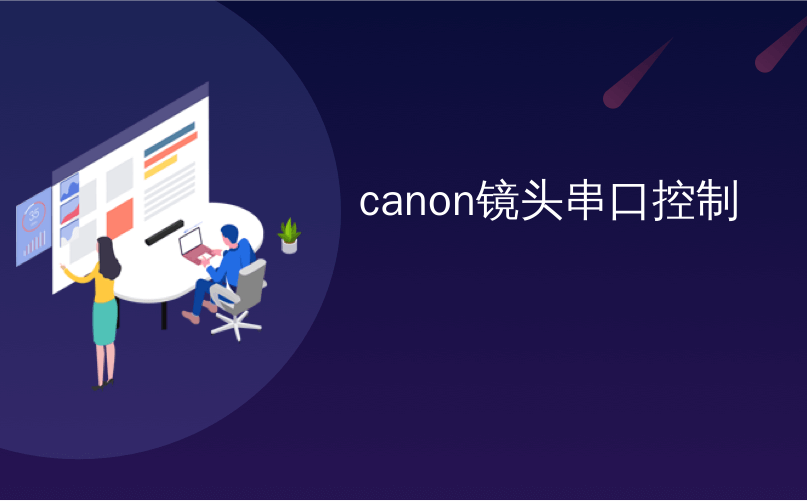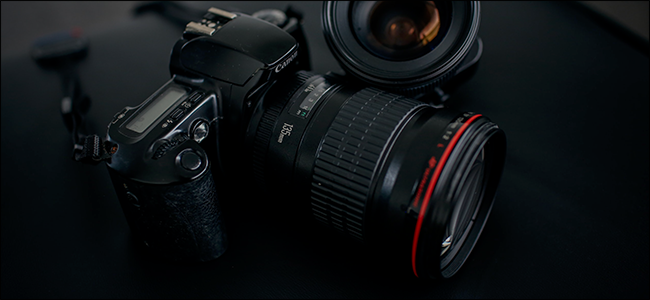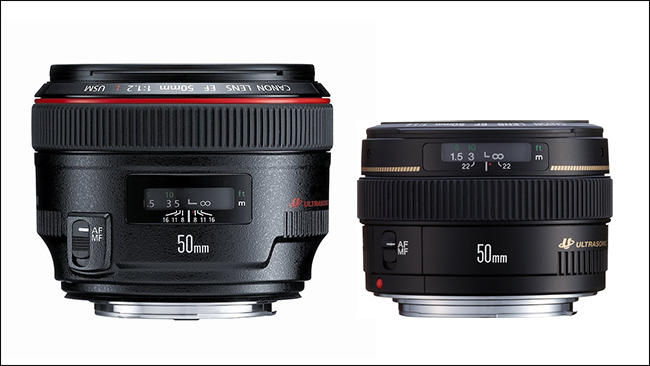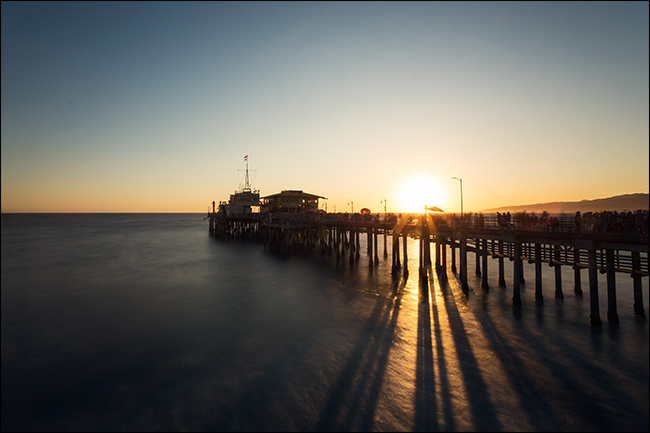
canon镜头串口控制

Canon sells regular and L-series lenses (the “L” stands for luxury). While the lenses may have similar specs, you can usually except L-series lenses to have better optics, build quality, and autofocus control, and a few more features. Let’s take a look.
佳能出售普通和L系列镜头(“ L”代表豪华)。 尽管这些镜头可能具有相似的规格,但通常可以选择L系列镜头以外的镜头,以提供更好的光学效果,更高的质量和自动对焦控制以及更多功能。 让我们来看看。
While there are great, affordable, Canon lenses available, you’ve probably seen lenses that have similar specs on paper but wildly different prices. For example, the Canon EF 70-300mm f/4-5.6 IS II USM lens is $449 while the similar-sounding Canon EF 70-300mm f/4-5.6L IS USM UD is $1,349. They have the same focal range and aperture, so what’s different about the regular and the L-series lens that makes one worth so much more?
佳能提供了价格实惠的优质镜头 ,但您可能会看到在纸上规格相似但价格却相差悬殊的镜头。 例如, 佳能EF 70-300mm f / 4-5.6 IS II USM镜头售价为449美元,而听起来相似的佳能EF 70-300mm f / 4-5.6L IS USM UD售价为1,349美元。 它们具有相同的焦距范围和光圈,那么普通和L系列镜头又有什么不同呢?
Canon’s lenses come in two categories: non-L lenses and L-series lenses. The “L” in L-series doesn’t actually mean very much; it just stands for luxury. If the name of the lens has an L in it after the aperture value, it’s an L-series lens. If it doesn’t, it isn’t. You can also tell from the design of the lens. L-series lenses have a red ring around the top and the telephotos are white; regular lenses are just black.
佳能的镜头分为两类:非L镜头和L系列镜头。 L系列中的“ L”实际上并不是很重要。 它只是代表奢华。 如果镜头名称的光圈值后面有L,则为L系列镜头。 如果不是,则不是。 您还可以从镜头的设计中看出来。 L系列镜头的顶部有一个红色环,远摄镜头是白色的。 普通镜片只是黑色的。

L-series lenses are Canon’s professional lenses; they’re designed to meet the needs of working photographers, although plenty of amateurs also own L lenses. This means that there are a number of factors that—generally—differentiate them from cheaper non-L lenses even if they have the same focal length or aperture.
L系列镜头是佳能的专业镜头; 尽管许多业余爱好者还拥有L镜头,但它们的目的是满足工作摄影师的需求。 这意味着,尽管它们具有相同的焦距或光圈,但通常有很多因素会使其与便宜的非L镜头有所区别。
更好的光学质量(通常) (Better Optical Quality (Normally))
L-series lenses generally have better optical quality than non-L lenses. There are one or two examples of some non-L prime lenses having similarly good optics, but across the board and in like-for-like comparisons, L lenses win handily.
L系列镜头通常比非L镜头具有更好的光学质量。 有一些非L 原色镜片具有类似的良好光学效果的一个或两个示例,但是总体而言,在同类比较中L镜片很容易取胜。
This means there’s less distortion, chromatic aberration, vignetting, lens flare, and the like. Photos will also be sharper right out of the camera. Basically, the images produced by an L lens will be noticeably better—at least to someone who knows what to look for—than images produced by a non-L lens.
这意味着更少的失真 , 色差 ,渐晕,镜头光晕等。 相机外的照片也将更加清晰 。 基本上,L透镜产生的图像要比非L透镜产生的图像好得多(至少对于知道要寻找什么的人而言)。
L lenses also tend to have faster apertures than non-L lenses. Canon’s fastest 50mm is the f/1.2L; the fastest non-L 50mm they offer is the f/1.4. You won’t find a non-L telephoto lens with an aperture wider than f/4; the 70-200mm f/2.8L IS II is one of the most popular L-lenses around.
L镜头的光圈也比非L镜头快 。 佳能最快的50mm是f / 1.2L ; 他们提供的最快的非L 50mm是f / 1.4 。 您将找不到光圈大于f / 4的非L远摄镜头; 70-200mm f / 2.8L IS II是周围最受欢迎的L镜头之一。
更好的建筑质量 (Better Build Quality)

Canon’s L-series lenses have better build quality than their non-L counterparts. The higher quality optics mean they’re bigger and heavier (the 50mm f/1.2L weighs 1.28lbs while the 50mm f/1.4 weighs 0.64lbs); they also use premium materials. Many non-L lenses make heavy use of plastic components, while L lenses tend to use a lot more metal. This means that the majority of them are pretty rugged and, to some degree, weather sealed. Dust, rain, sand, and the like are far less likely to get into the mechanisms or between the glass elements and mess things up.
佳能的L系列镜头比非L镜头具有更好的制作质量。 更高质量的光学器件意味着它们更大,更重(50mm f / 1.2L重1.28磅,而50mm f / 1.4重0.64磅); 他们还使用优质材料。 许多非L镜片大量使用塑料部件,而L镜片往往使用更多的金属。 这意味着它们中的大多数坚固耐用,并在某种程度上不受天气影响。 灰尘,雨水,沙子等之类的东西进入机械装置或玻璃元件之间的可能性大大降低。
更好的自动对焦和对焦控制 (Better Autofocus and Focus Control)
L-series lenses have better autofocus and focus control than non-L lenses. Their autofocus tends to be faster and more accurate. They also have full-time manual focus (even in autofocus modes you can twist the focus ring to adjust) and focus distance scales on the lens, which a lot of non-L lenses lack.
L系列镜头比非L镜头具有更好的自动聚焦和聚焦控制。 他们的自动对焦趋向于更快,更准确。 它们还具有全时手动对焦(即使在自动对焦模式下,您也可以旋转对焦环进行调整)和镜头上的对焦距离刻度,这是很多非L镜头所缺乏的。
全帧支持 (Full Frame Support)
All Canon’s L-series lens are compatible with their EF mount full frame cameras. A huge number of non-L lenses use Canon’s EF-S mount, which means they can only be used on crop sensor cameras. There are non-L EF mount lenses, but there are no L-series EF-S mount lenses.
佳能的所有L系列镜头均与其EF卡口全画幅相机兼容。 大量的非L镜头都使用佳能的EF-S卡口,这意味着它们只能用于作物传感器相机。 有非L EF卡口镜头,但没有L系列EF-S卡口镜头。
相同的过滤器尺寸 (The Same Filter Size)
Where possible, Canon’s L-series lenses all share the same filter size: 77mm. This means you can easily share filters—such as neutral density filters or polarizers—between all your lenses. There are a few L-series lenses that, due to their optical design, have a different filter size but they’re all far more consistent than non-L lenses.
佳能的L系列镜头都尽可能共享相同的滤镜尺寸:77mm。 这意味着您可以轻松地在所有镜头之间共享滤镜,例如中性密度滤镜或偏光镜。 由于光学设计的原因,有些L系列镜头的滤镜尺寸有所不同,但与非L镜头相比,它们的一致性要高得多。
您应该购买L系列镜头吗? (Should You Buy L-Series Lenses?)
By now it should be pretty clear that L-series lenses have a few marked advantages over non-L lenses: they capture better images, are better built, and give you more control over what’s in focus. This doesn’t mean you should rush out and replace all your lenses with the most expensive bit of glass you can find, though.
到现在为止,应该很清楚,L系列镜头比非L镜头有一些明显的优势:它们可以捕获更好的图像,更好地制作图像,并让您更好地控制对焦。 但是,这并不意味着您应该赶紧用所有最昂贵的玻璃替换所有的镜片。
Your skill as a photographer matters far more than the lens you are using. If your photos aren’t well composed , it doesn’t matter if they’re perfectly sharp. No one looks at a boring photo and goes, “Ah, edge to edge sharpness; great work!”
您作为摄影师的技能远比您使用的镜头重要 。 如果您的照片没有很好的构图 ,那么它们是否非常清晰也没关系。 没有人看着无聊的照片,然后说:“啊,边缘到边缘的清晰度; 做得好!”

L-series lenses are expensive. The cheapest L lens you can buy is the Canon EF 17-40mm f/4L USM for $749, and the prices only go up from there. You can get some great glass for a lot less than that. In fact, unless you have a full frame camera, you won’t even be able to make the most of the 17-40 f/4L. You’d be much better off with the $279 Canon EF-S 10-18mm f/4.5-5.6, which will actually give you the wide angle images you’re looking for.
L系列镜头很昂贵。 您可以购买的最便宜的L镜头是佳能EF 17-40mm f / 4L USM ,价格为749美元,而且价格从那里开始上涨。 你可以花更少的钱买到一瓶好玻璃 。 实际上,除非您拥有全画幅相机 ,否则您甚至无法充分利用17-40 f / 4L。 售价279美元的佳能EF-S 10-18mm f / 4.5-5.6可能会更好,它实际上会为您提供所需的广角图像。
L-series lenses are designed for working photographers who view new gear as an investment in their business. Unless you like to shoot in rough conditions, you don’t need weather sealed lenses. If you’re missing focus because you’re not using your autofocus correctly, a sharper lens isn’t going to help you. There are certainly big advantages to L-series lenses, but the average photographer won’t need them or notice them.
L系列镜头是专为正在工作的摄影师设计的,他们将新装备视为对他们业务的投资。 除非您喜欢在恶劣的环境下拍摄,否则不需要耐候密封镜头。 如果由于未正确使用自动对焦而失去焦点,则较锐利的镜头将无济于事。 L系列镜头肯定有很大的优势,但普通摄影师不会或不需要它们。
Image Credit: William on Unsplash.
图片来源: William on Unsplash 。
canon镜头串口控制







 佳能L系列镜头通常比非L镜头具备更好的光学质量、建筑质量和自动对焦控制,适合专业摄影师。它们有全帧支持,且滤镜尺寸统一。然而,价格更高,普通用户若非特殊需求,非L系列镜头也能提供良好的拍摄体验。
佳能L系列镜头通常比非L镜头具备更好的光学质量、建筑质量和自动对焦控制,适合专业摄影师。它们有全帧支持,且滤镜尺寸统一。然而,价格更高,普通用户若非特殊需求,非L系列镜头也能提供良好的拍摄体验。

















 被折叠的 条评论
为什么被折叠?
被折叠的 条评论
为什么被折叠?








